Angora rabbits are easy to care for, they don’t require vaccinations and it’s cheap to feed them. The biggest chore you will have is grooming them if you want the fur to be clean and matt-free. If you don’t have time and you are not willing to thoroughly brush or blow out their coats at least twice a week, you better consider getting another breed.
Contents
Angora Rabbit Breeds
English Angora
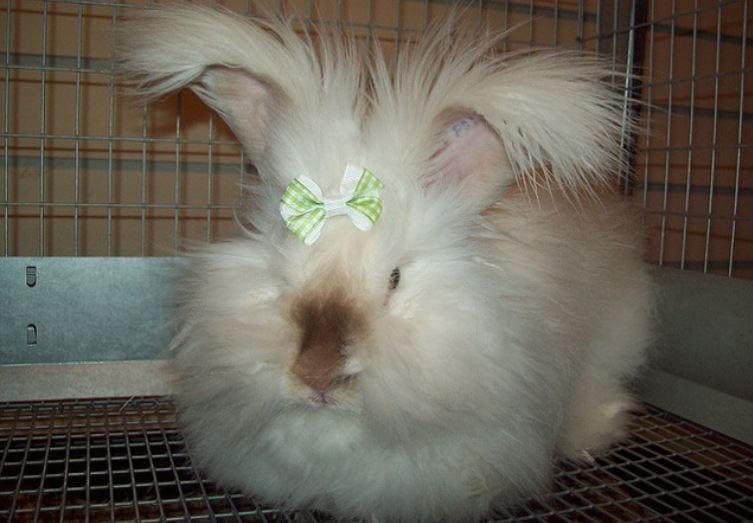
The most distinctive breed because of its long heavy fur that covers its ears and face. When they have a full coat, the whole body is covered in wool so people sometimes mistake them for small dogs. Their wool is silky and very soft. You can find English Angoras in white and a variety of pretty colors. The coat is characterized by having little guard hair in proportion to its wool. It’s the smallest breed of all, and they weigh 5 to 7 ½ pounds when mature
French Angora
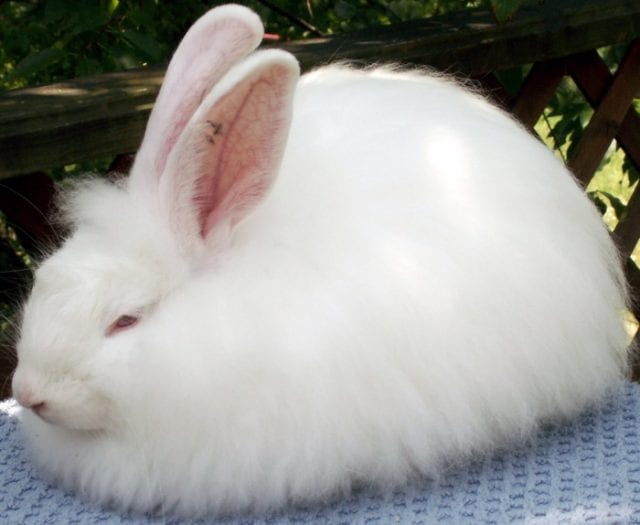
French Angoras have no wool on their head, face, ears, or the front feet, and they look like normal rabbits. They have more guard hair under the wool, and that makes them easier to care for. The wool is excellent for handspinning because it spins easily and fluffs out nicely in the yarn. Its mature weight is 8-10 lbs.
Satin Angora
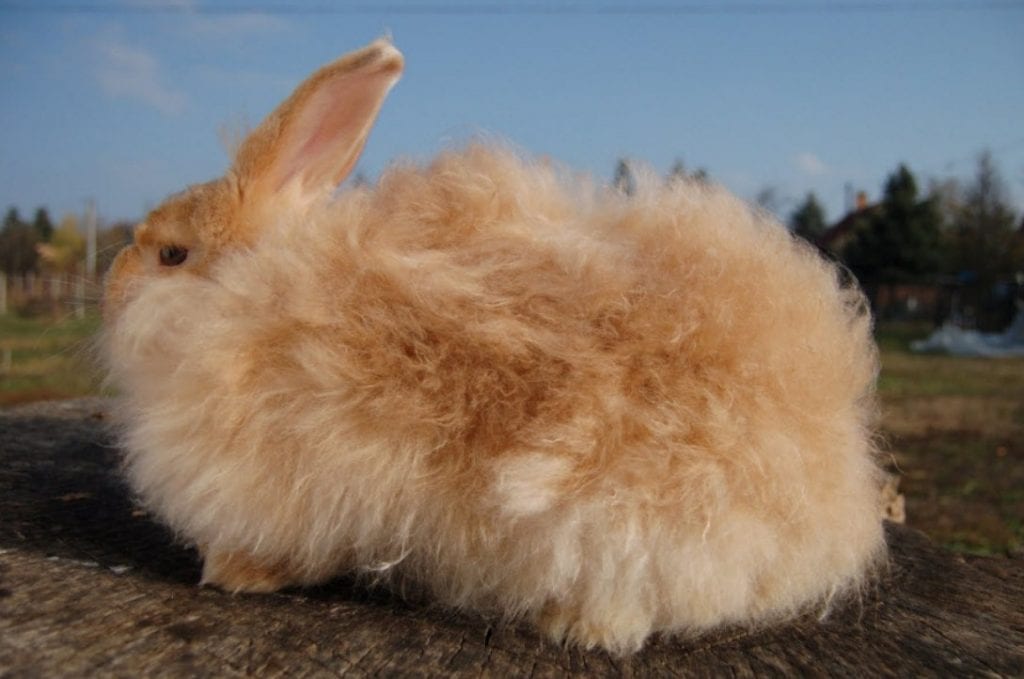
Satin Angoras have a glossy coat and they don’t have wool on the head, face, ears or front feet. The wool is lighter and less dense, and it requires more grooming. Many spinners prefer the wool from Satin Angoras because of its shiny wool fibers. The weight of a matured Satin Angora is 8 lbs.
German Angora
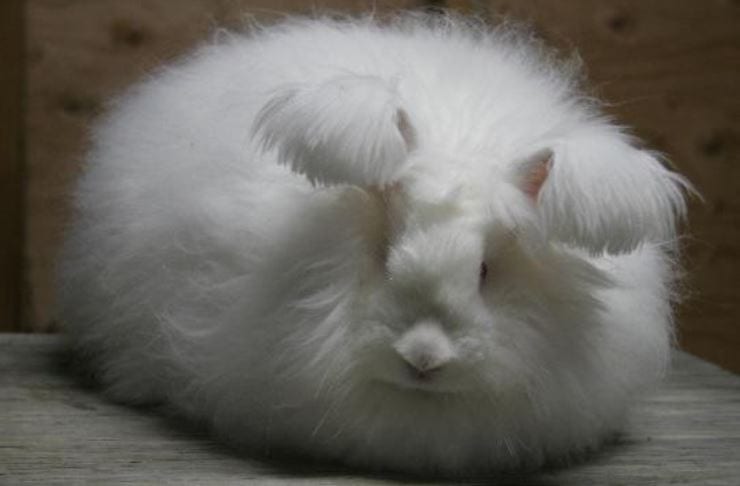
German Angoras are popular because they give large amounts of fiber. A purebred German Angora is only white, but there are colored ones that are cross-bred. Their wool is dense because they have a double undercoat. The only problem with German Angoras it that they need to be sheared, because they rarely molt. Mature German Angora weights between 9-12 pounds.
Giant Angora
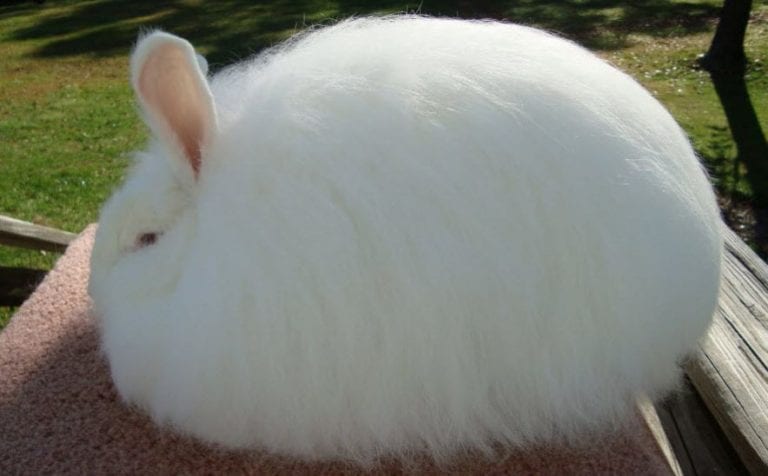
This is the largest of the breeds and they are mostly used commercially for large amounts of full production. An adult Giant Angora can weight up to 20 pounds. They have three types of fiber textures, the underwool being the most dominant. The wool is very dense and needs to be sheared because they rarely molt, just like German Angoras. The quality and the softness of their fiber is similar to the German Angoras and people sometimes mistake them for being the same breed. But you can recognize them because a purebred Giant Angora has ruby eyes.
CAGES
There are a number of ways to maintain your rabbits. Some owners keep their rabbits outdoors, some keep them in their garage or basement, or in the house. But there are a few things you need to consider.
If you want to keep your rabbits outside, you need to keep the cages off the ground and make sure they are sturdy enough to withstand a predator attack. You also need to provide shelter from the weather, when there’s snow, rain, and heat.
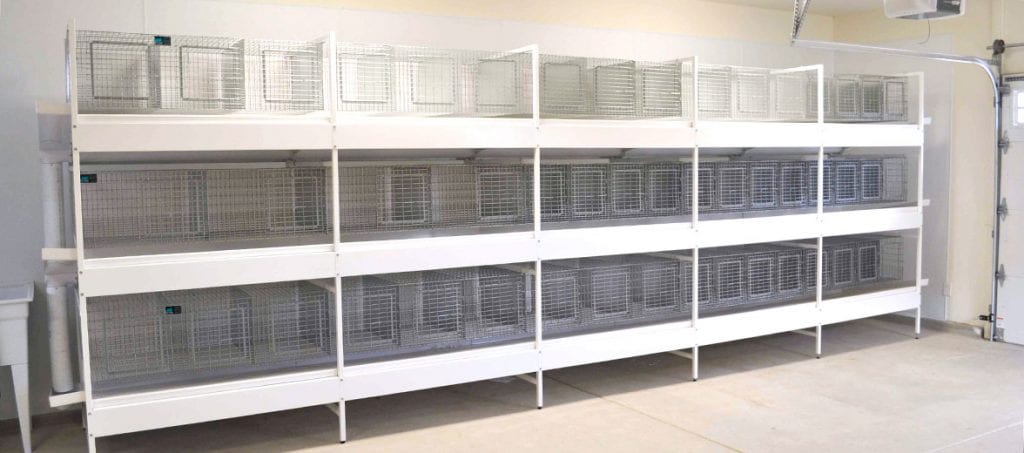
If you are keeping your rabbits indoors, you will also need a cage. You can buy them or you can build your own. Make sure that the cages have a wire mesh floor and a durable plastic drip pan that slides underneath the cage. To make it easy to clean, line the pan with disposable cage liners. You need to clean the cages every 2 days, because a heavily soiled cage is very irritating to your rabbit, because of the smell of the urine. And also it’s not pleasant to have that kind of smell in the house. Please don’t put more than one rabbit in a cage, unless they are from the same litter and they are still very young, because they can get very territorial.
FEEDING
The most important thing about angora care is feeding. Angora rabbits need extra protein to support constant wool production. The best way is to feed them 18% protein commercial rabbit pellets, which can be bought at almost any pet store. You can feed your rabbit with pellets and Timothy hay up until 4-6 months. After that, the rabbit is an adult and their food needs to be cut back.
Hay: If you want to prevent “wool block”, you need to add roughage to their diet and you can do that by feeding them hay. You can give them a hand full of hay twice a day and you can use a hay feeder, but that’s not necessary. Read more about the rabbit pet guide at rabbitspot.com.
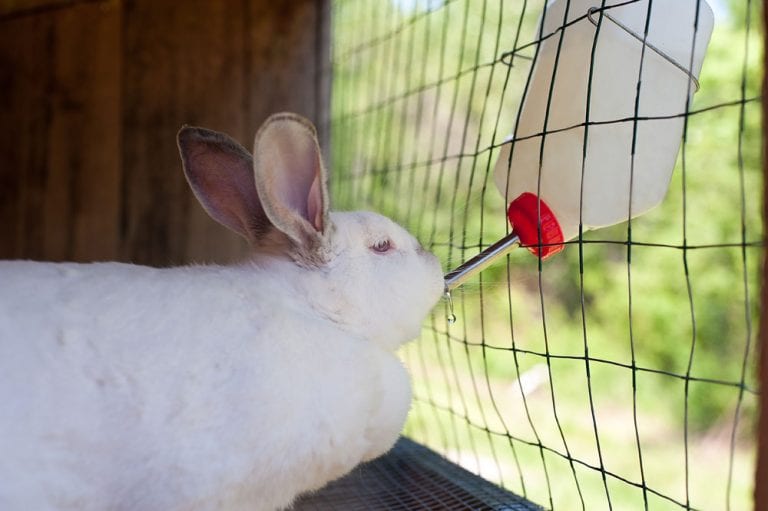
Water: Always make sure that there is fresh water every day for your rabbits.
Treats: You can give your rabbits treats once a week, you don’t need to do it more often. You can give them fruits and vegetables, like bananas, papaya, broccoli and it helps their digestive system healthy and prevents wool block. Because the digestive system of babies is delicate you need to start giving them treats when they are 4-6 months old. There are also Papaya tablets, that can be bought at health food stores and they prevent wool block too. You can give them 2 to 5 tablets once a week.
GROOMING
You need to buy some grooming tools, a small and a large pet grooming brush (wire-bristles), a small-tooth comb for combing out matts, a small pair of scissors for cutting out matts and nail trimmer. If you are raising show rabbits, you will need a blower too. And if you are raising rabbits for wool production, you need to give them a good brushing twice a week to keep them free from tangles and matts. Also removing their loose hair helps prevent wool block. If you want to have an angora rabbit for show, you will need to maintain the density and length of wool to score well. You will need to learn some special grooming techniques, and you will need to use a blower to open up the coat and to keep as much hair as possible on the rabbit. You can find a blower in dog grooming shops, and you can use the blower once a week. If you plan to use the wool for spinning of felting you need to regularly groom your rabbits to keep them free from matts and tangles.
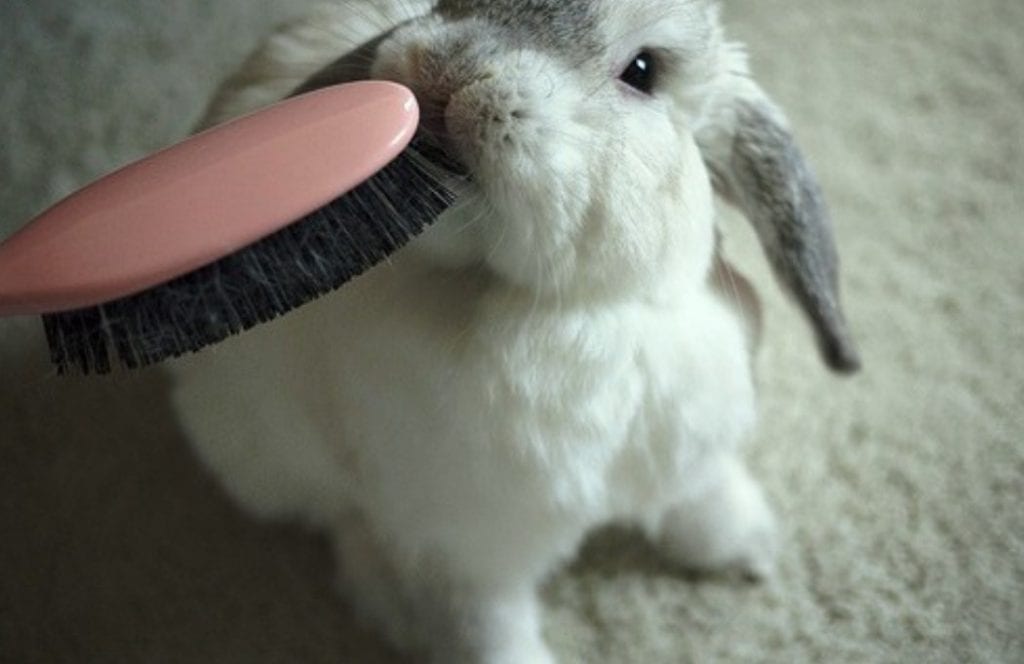
When you are grooming your rabbit you need to start by setting the rabbit on the lap and brush the top hair on its back and sides, and then do the stomach and legs gently. You can hold the rabbit in between your knees and brush the stomach, bib, and legs if you do it gently it won’t hurt the rabbit. If you fail to brush the matts you can cut them out, but be careful to not injure the rabbit. The best thing is to start your grooming like this and find your own method, that works best for you and your rabbit. If you make this a regular practice, your rabbit will usually surrender peacefully to the grooming.
HARVESTING
If you are planning on using the wool from the rabbits, you need to know that most angoras will naturally shed their coat 3 to 4 times a year. You will maybe have some trouble with German Angoras because they do not molt their wool like other breeds, so shearing the rabbit is a common practice. You can clip the wool from their legs, ears, tail, and face and easily remove the wool from their back, bib, and stomach.
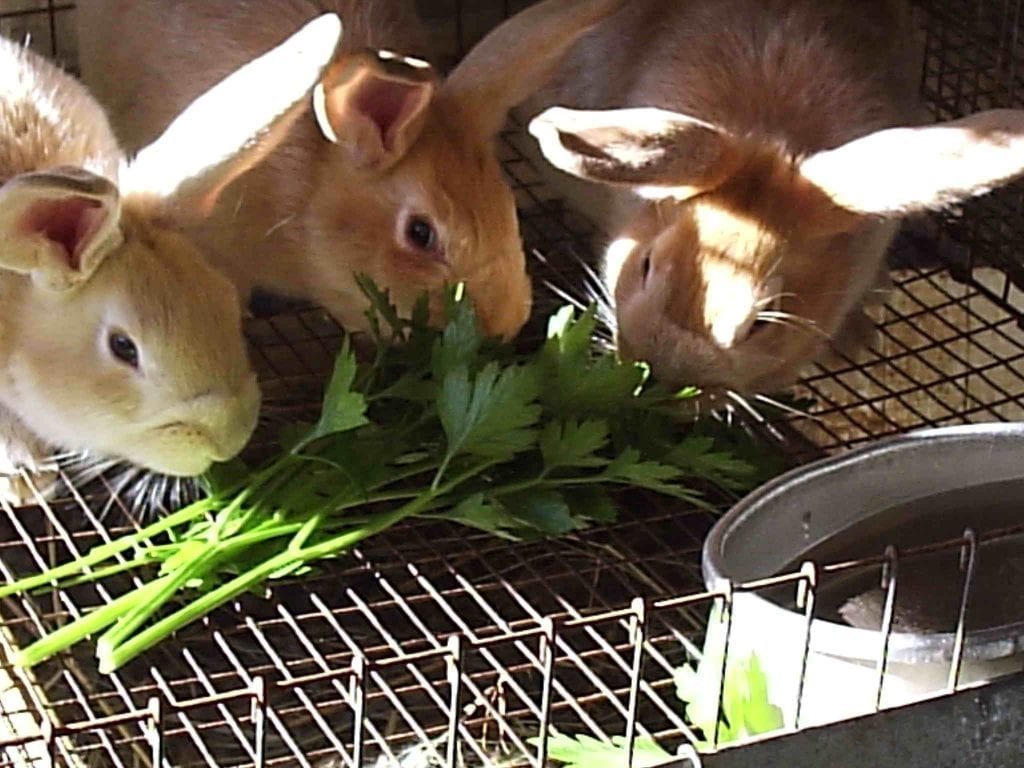
When you see clumps of wool sticking to the cage or the rabbit dragging strings of wool behind it, then the wool is ready to harvest. You will need to take your time because you need about 1 or 2 hours of grooming time per rabbit. You can hand harvest the rabbits, by gently pulling the loose fiber from the rabbit with your fingers. This doesn’t hurt the rabbit because the wool is shedding naturally. You can store the wool in a box or in a paper bag. If you plan on selling the wool, it is important that the staples of wool stay neat. But if you are planning on spinning the wool, let it grow at least 3 inches long, or more, as long as the rabbit remains healthy.
WOOL BLOCK
Angora rabbits lick their coats to keep them clean, just like cats. But unlike a cat, the rabbit will not be able to regurgitate the fiber from its stomach, and a large build up will clog its digestive system and intestines. If this happens the rabbit will stop eating food and he will stop drinking water. If you left your rabbit untreated, it will starve to death. A sure sign of wool block, besides a loss of appetite, is when the rabbit’s feces become very small and dry. So you need to pay close attention is your rabbit happy and playful, or is he losing its appetite.
If you suspect there’s a wool block you need to consult a veterinarian, specialized in rabbits. But If you early detect a wool block, you can take away your rabbit’s pellets and feed it more hay. You can give the bunny some mineral oil or pineapple juice with the water because it helps increase stomach enzymes. If the rabbit doesn’t want to drink the water, you need to give it water with a syringe.
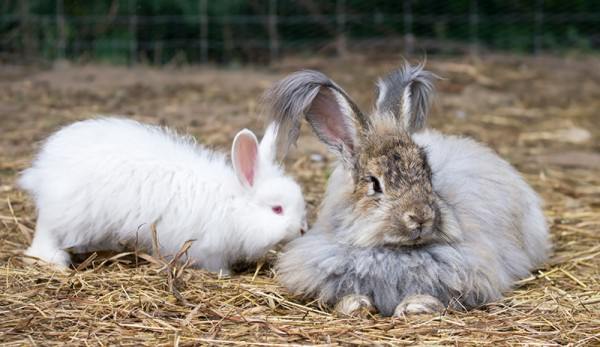
If nothing is working and if it’s an extreme case, the veterinarian can treat your rabbit and feed him intravenously. Wool blocks can be a scary thing so you need to keep a close eye on your rabbits because if detected soon enough it can be reversed. If you’re looking for a rabbit hutch for your Angora rabbit, click here
